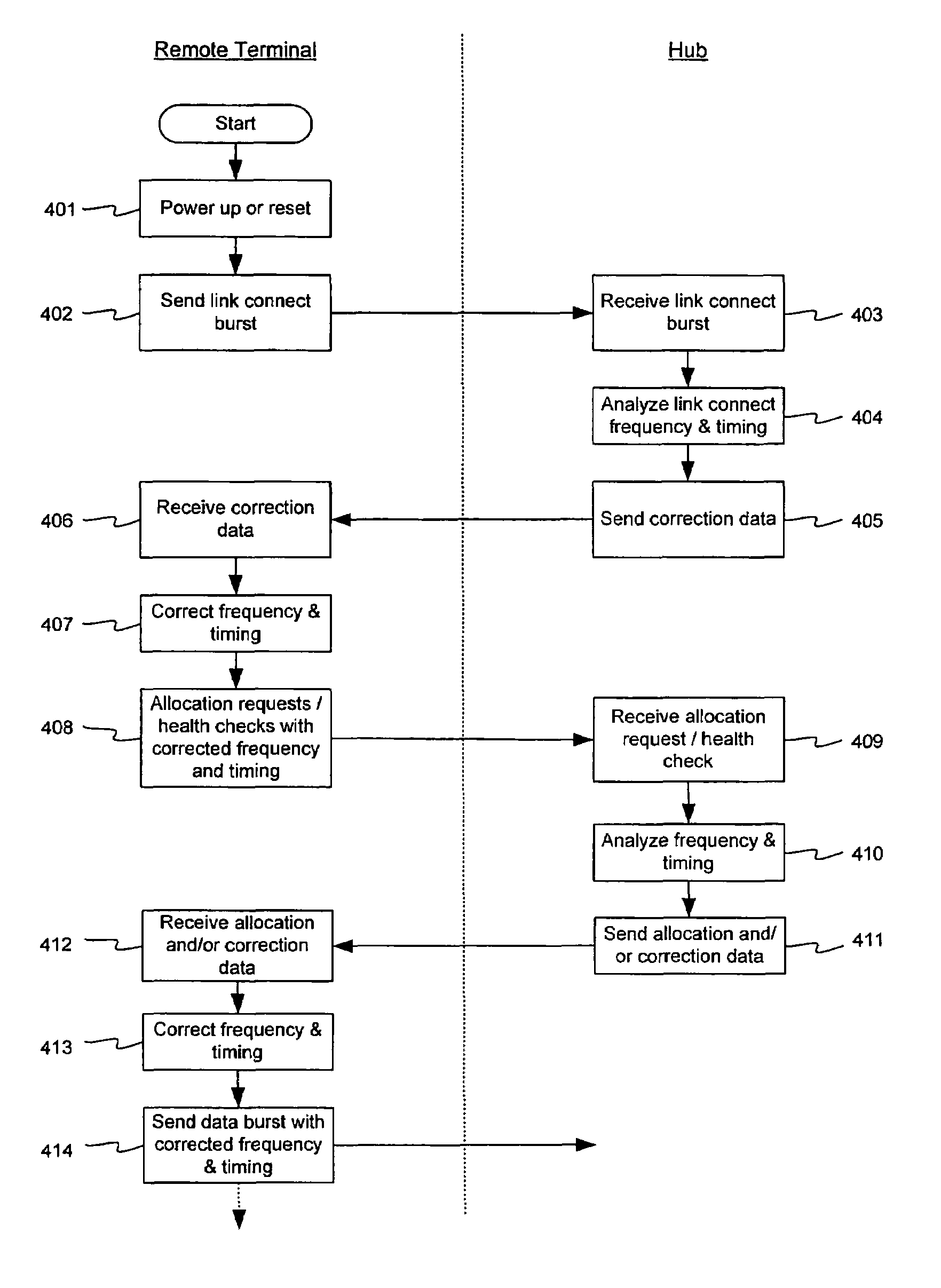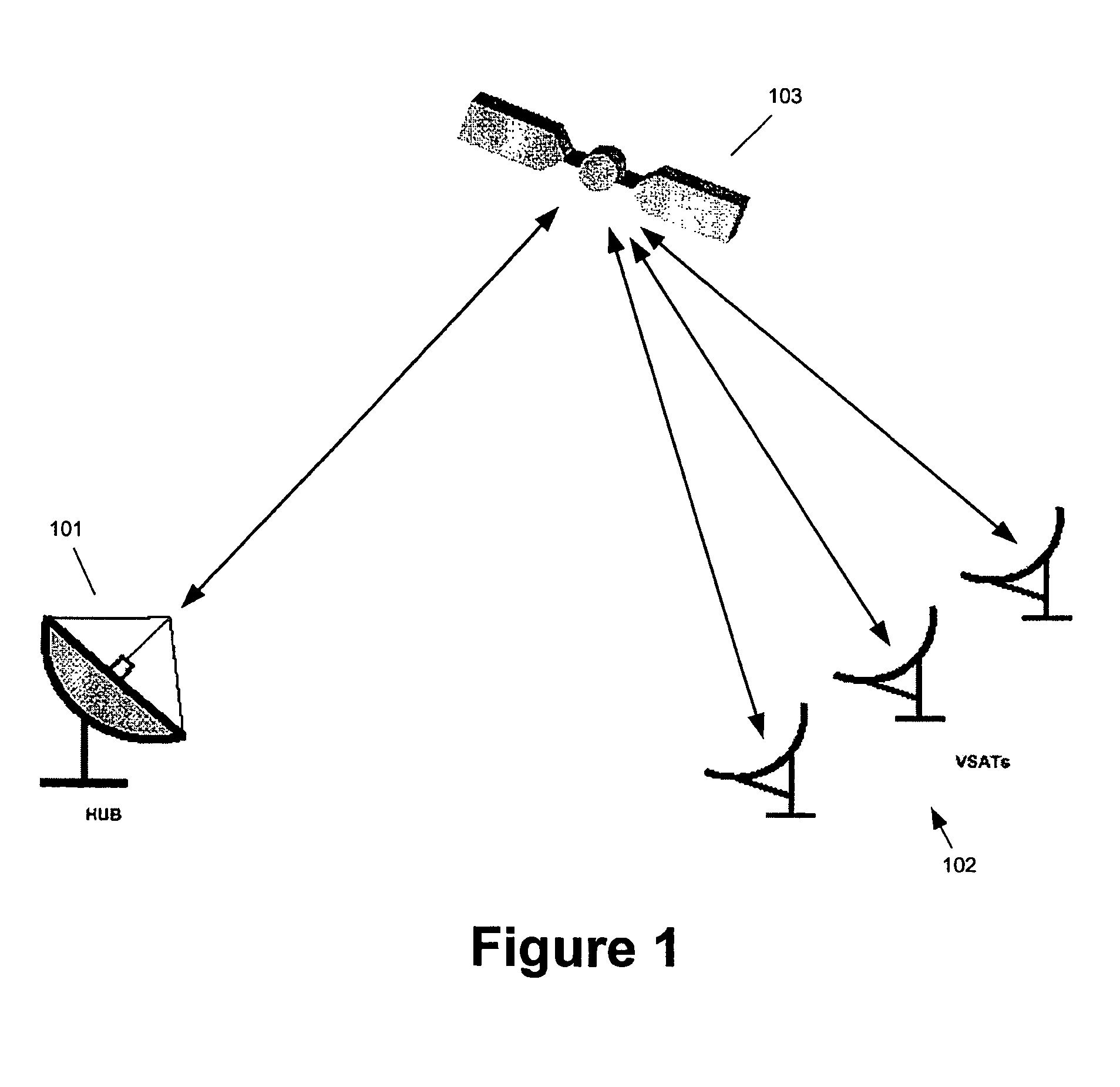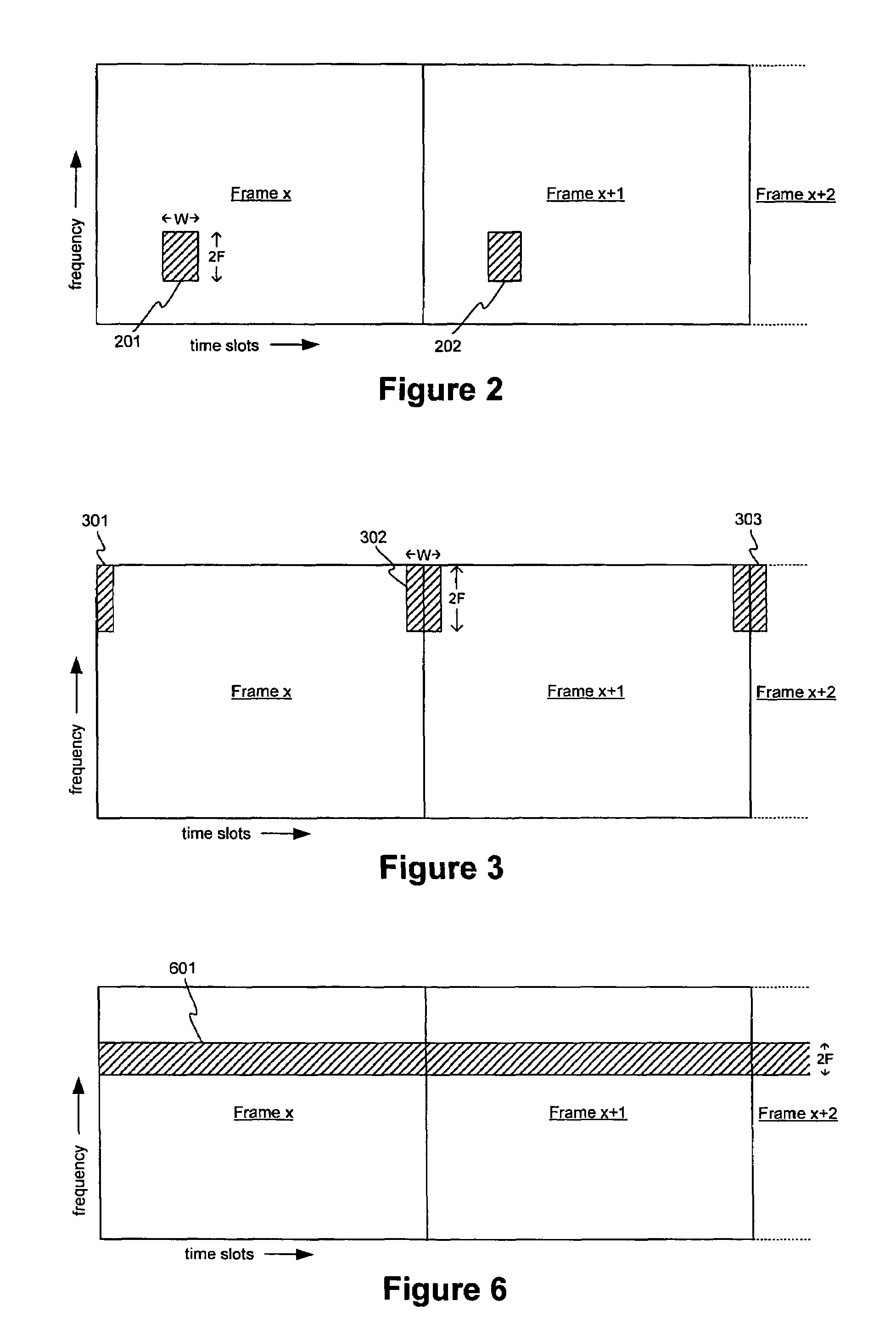Frequency and timing synchronization and error correction in a satellite network
a satellite network and frequency and timing synchronization technology, applied in the field of frequency and timing synchronization and error correction in a satellite network, can solve problems such as limited initial frequency errors, for instance, and achieve the effects of simplifying installation, efficient use of satellite bandwidth resources, and large initial frequency errors
- Summary
- Abstract
- Description
- Claims
- Application Information
AI Technical Summary
Benefits of technology
Problems solved by technology
Method used
Image
Examples
Embodiment Construction
[0022]FIG. 1 shows an illustrative satellite network including a satellite 103, a hub 101, and a plurality of remote terminals 102 such as, but not limited to, VSATs. The hub 101 and the remote terminals 102 as shown embody a two-way data network in a star configuration. Messages from the hub 101 to the remote terminals 102 may be sent via a TDM signal on a forward or outbound channel that is broadcast to some or all of the remote terminals (“multicast” messages). Messages to specific ones of the remote terminals 102 (“unicast” messages) may also be multiplexed along with the “multicast” messages. The hub 101 may transmit via a standard DVB-S carrier, and may include a local DVB-S receiver that receives its own outbound transmission. The output data from the DVB-S receiver may be a standard MPEG transport stream.
[0023]The data from the remote terminals 102 to the hub 101 may be sent as a series of burst transmissions. Multiple access to the shared frequency-time resources may be imp...
PUM
 Login to View More
Login to View More Abstract
Description
Claims
Application Information
 Login to View More
Login to View More - R&D
- Intellectual Property
- Life Sciences
- Materials
- Tech Scout
- Unparalleled Data Quality
- Higher Quality Content
- 60% Fewer Hallucinations
Browse by: Latest US Patents, China's latest patents, Technical Efficacy Thesaurus, Application Domain, Technology Topic, Popular Technical Reports.
© 2025 PatSnap. All rights reserved.Legal|Privacy policy|Modern Slavery Act Transparency Statement|Sitemap|About US| Contact US: help@patsnap.com



